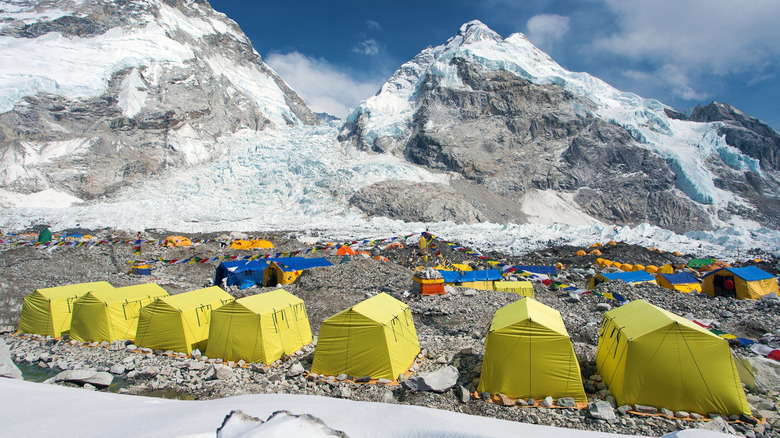A Dangerous 'Secret Weapon' Just Made Climbing Mount Everest 'Too Easy,' Expert Mountaineers Say
Mount Everest, one of the planet's most intriguing mountains, has become one of the outdoor sporting world's most highly contested adventures. Since 2019, when a climber snapped a photo of a "traffic jam" of climbers waiting to summit the renowned mountain, outdoor enthusiasts and professional climbers alike have debated whether or not the top of the world should become easier for the general public to reach. Though the sentiment might sound elitist at first glance, it does come with safety concerns for armchair adventurers. The same day that the traffic jam was photographed in 2019, a climber died after waiting two hours to descend. Today, there's a new aide, xenon gas, helping climbers make the trip faster than ever, and it's raising the same safety alarms that have been ringing for years.
While the trip to the summit of Mount Everest typically takes several weeks to complete, a group of climbers recently made the round-trip from home to the top and back to London in a week. Even a trip to base camp alone requires at least 12 to 14 days to trek. But by inhaling controversial xenon gas, the Londoners were able to move much faster, although they upset reputable members of the climbing community and the Nepalese government.
What is xenon gas?
Xenon gas was once used as an anesthetic and is thought to boost the production of red blood cells in the body due to low oxygen levels through increased production of a protein called erythropoietin. Erythropoietin also boosts hemoglobin, which transports oxygen throughout the body, which could be quite helpful for the climbers at very high altitudes. The trouble is that researchers are unsure of the gas's side effects. Some side effects could include fatigue, shortness of breath, dizziness, difficulty swallowing, and swelling around the face.
One Everest guide, however, believes xenon gas is making the climb safer and more environmentally friendly. Lukas Furtenbach, who led the British climbers after they inhaled a small amount of the gas mixed with oxygen in Germany, explained that the gas was only meant to help with altitude sickness. He also believes that allowing people to summit and leave the mountain soon will help reduce the impact that so many climbers have by being on the mountain for so long (such as human waste).
Nonetheless, only time will tell how the changes and accessibility to Mount Everest are received. Whether conditions on the mountain improve as the number of climbers each year increases, as well as how the climbing community views making the trek easier, will only be revealed as people continue to take advantage of these opportunities. In the meantime, explore an unspoiled trek in the mountains of Pakistan or the most deadly mountain in the United States.

